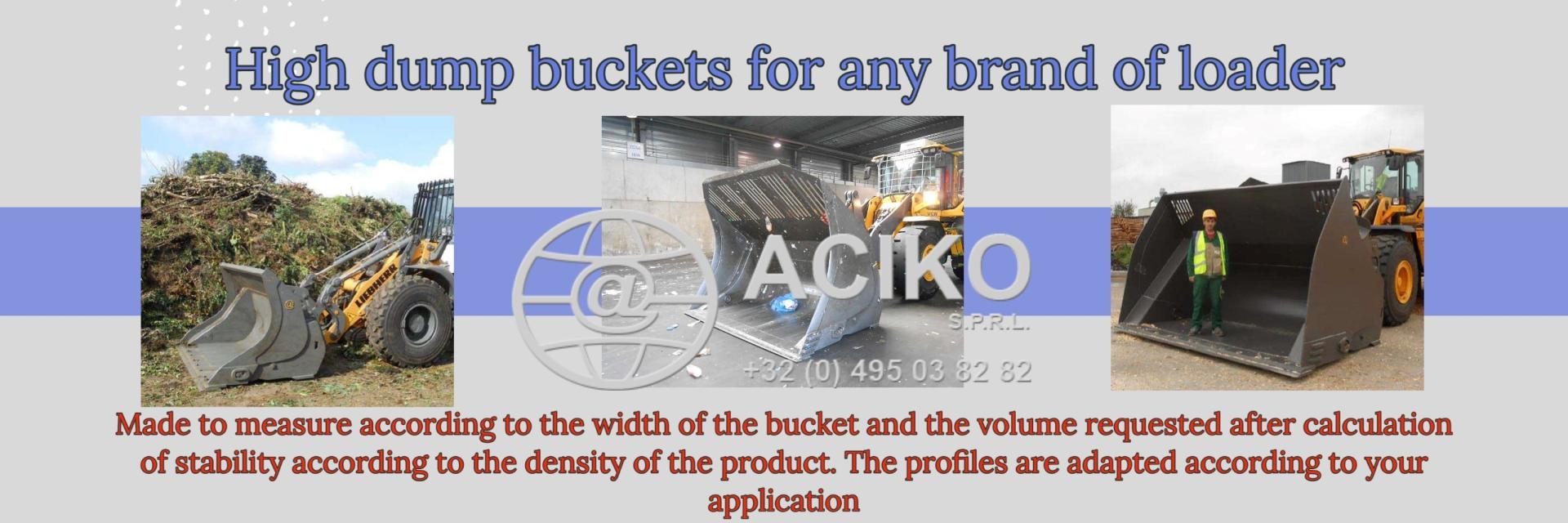R.E.News International-New analysis: US steel tariffs push construction equipment prices up across the board
 08/10/25-FR-English-NL-footer
08/10/25-FR-English-NL-footer
Nouvelle analyse : les tarifs douaniers sur l’acier américain font flamber les prix des équipements de construction
 Image-R.E.News©
Image-R.E.News©
Il y a encore peu de temps, les droits de douane n’étaient guère un sujet de conversation populaire. Avant 2025 et l’arrivée d’un second mandat de Donald Trump, rares étaient ceux qui suivaient de près les tensions commerciales ou les arcanes de la politique tarifaire américaine.
Mais tout a changé à l’approche du mois d’avril, date marquée d’une pierre blanche par la fameuse “Liberation Day” : un tournant qui a vu Washington imposer des droits spectaculaires sur les importations venues de ses rivaux comme de ses alliés. Du jour au lendemain, le mot tariffs – “droits de douane” – est devenu omniprésent dans les débats politiques et économiques.
Après quelques semaines de négociations effrénées avec les gouvernements du monde entier, certains pays ont obtenu des réductions ou des exemptions. La tempête semblait s’apaiser.
Mais en août, une nouvelle vague de taxes s’est abattue : des tarifs de 50 % sur l’acier et l’aluminium, étendus cette fois non seulement aux matières premières, mais aussi à tous les produits finis qui en contiennent — pièces, composants et machines complètes.
Et si ces mesures ont fait moins de bruit médiatique que la “Liberation Day”, leur impact sur le secteur des équipements de construction s’annonce bien plus profond, selon une récente étude d’Off-Highway Research.
Un effet domino sur toute la chaîne industrielle
L’étude révèle que ces nouveaux tarifs ne se contentent pas de s’ajouter aux précédents : ils redéfinissent entièrement la donne. Désormais, les hausses de prix sur les machines fabriquées dans l’Union européenne pourraient être presque aussi fortes que celles provenant de pays considérés comme “non alliés”, tels que la Chine.
Même les machines produites sur le sol américain verront leurs coûts grimper.
Pourquoi ? Tout simplement parce que les engins de chantier sont gorgés d’acier. Des excavatrices aux tombereaux articulés, la part du métal dans ces machines est si importante que la taxe de 50 % sur cette composante dépasse largement toute réduction douanière obtenue auparavant.
“Le contenu en acier est si élevé que cette taxe annule pratiquement toutes les négociations précédentes”,
explique Chris Sleight, directeur général d’Off-Highway Research.
“Peu importe le pays d’origine : chaque importation supportera désormais un coût élevé à l’entrée sur le territoire américain.”
Et comme de nombreuses pièces utilisées par les fabricants américains proviennent elles-mêmes de l’étranger, même les machines “made in USA” ne seront pas épargnées.
Un marché sous pression
Le paradoxe est que les États-Unis restent l’un des plus grands marchés mondiaux d’équipements de construction, et un importateur net. En 2024, malgré un ralentissement du secteur, plus de 285 000 machines y ont été vendues.
Combinée à la forte dépendance du secteur à l’acier et à l’aluminium, cette situation transforme les nouveaux tarifs en véritable bombe à retardement économique.
Les taxes initiales instaurées en avril 2025 – de 10 à 30 % selon l’origine des produits – sont désormais éclipsées par les tarifs “Section 232”, qui font grimper les taux à 40-50 % pour les équipements finis, pièces et composants.
Certains acheteurs tenteront sans doute de se tourner vers des fabricants américains.
Mais cette stratégie se heurte à deux obstacles majeurs :
De nombreux types d’équipements ne sont pas produits aux États-Unis, ou ne le sont que par un petit nombre d’acteurs.
Les fabricants américains eux-mêmes subissent la hausse du coût des matières premières importées.
Sans parler des marques américaines qui produisent une partie de leurs machines à l’étranger : ces modèles sont, eux aussi, désormais taxés.
Résultat : les acheteurs américains se retrouvent face à un dilemme.
Payer plus cher, ou reporter leurs investissements.
Des hausses de prix vertigineuses
Selon les calculs d’Off-Highway Research, l’impact sera massif :
Les acheteurs américains devront débourser en moyenne 27 % de plus qu’avant l’introduction des nouveaux tarifs.
Les machines importées verront leurs prix grimper jusqu’à 45 %, selon leur contenu en acier et leur provenance.
Les machines fabriquées aux États-Unis connaîtront une hausse de 20 à 25 %, dépendant de la part de composants étrangers.
Et ces chiffres pourraient s’aggraver si les fabricants nationaux décident d’aligner leurs prix sur ceux de la concurrence étrangère.
Une alerte sur l’inflation mondiale
Cette étude vient renforcer un faisceau d’alertes émanant de l’industrie.
En août, le constructeur britannique JCB a averti que les nouveaux tarifs américains sur les produits finis contenant de l’acier ou de l’aluminium pourraient lui coûter “des centaines de millions de livres”.
Le Royaume-Uni bénéficie pourtant d’un tarif réduit de 25 %, contre 50 % pour la plupart des autres pays.
“Ces droits sont punitifs”,
a déclaré le PDG de JCB, Graeme MacDonald, au Times, rappelant que son entreprise venait de doubler la taille de son usine texane à San Antonio.
De son côté, le Comité européen des équipements de construction (CECE) estime que ces mesures menacent 2,8 milliards d’euros d’exportations européennes vers les États-Unis chaque année.
Mais les conséquences ne s’arrêtent pas aux frontières. Le géant américain Caterpillar a lui-même averti ses investisseurs d’un surcoût net de 1,5 à 1,8 milliard de dollars, contre 1,3 à 1,5 milliard estimé auparavant.
Vers un ralentissement du marché américain
Selon Off-Highway Research, les effets des nouveaux tarifs commencent tout juste à se faire sentir. Les ventes d’équipements devraient chuter en 2025, et le vrai impact ne sera pleinement visible qu’en 2026.
En attendant, l’incertitude demeure totale.
Personne ne sait quelle sera la prochaine étape de la guerre commerciale menée au nom du protectionnisme.
Mais une chose est sûre : dans le monde du BTP, l’acier est devenu aussi politique que stratégique.
NJC.© Info Off-Highway Research - JCB CEO Graeme MacDonald Chris - Sleight, Managing Director of Off-Highway Research.
----------------------------------------------------------------------------------------------------------------
 08/10/25-English
08/10/25-English
New Analysis: US Steel Tariffs Are Driving Construction Equipment Prices Soar
 Image-R.E.News©
Image-R.E.News©
Until recently, tariffs were hardly a popular topic of conversation. Before 2025 and Donald Trump's second term, few people closely followed trade tensions or the intricacies of US tariff policy.
But everything changed as April approached, the date marked by the famous "Liberation Day": a turning point that saw Washington impose spectacular duties on imports from its rivals and allies alike. Suddenly, the word "tariffs" became ubiquitous in political and economic debates.
After a few weeks of frantic negotiations with governments around the world, some countries obtained reductions or exemptions. The storm seemed to be subsiding. But in August, a new wave of tariffs hit: 50% tariffs on steel and aluminum, this time extended not only to raw materials, but also to all finished products containing them—parts, components, and complete machines.
And while these measures received less media attention than "Liberation Day," their impact on the construction equipment sector promises to be much more profound, according to a recent study by Off-Highway Research.
A domino effect across the entire industrial chain
The study reveals that these new tariffs don't just add to the previous ones: they completely redefine the situation. From now on, price increases on machinery manufactured in the European Union could be almost as steep as those from countries considered "non-allied," such as China.
Even machinery produced on American soil will see its costs rise.
Why? Simply because construction equipment is full of steel. From excavators to articulated haulers, the metal content of these machines is so significant that the 50% tariff on this component far exceeds any previous tariff reductions.
“The steel content is so high that this tariff virtually negates all previous negotiations,” explains Chris Sleight, Managing Director of Off-Highway Research.
“It doesn’t matter the country of origin: every import will now incur a high cost upon entering the US.”
And since many parts used by US manufacturers themselves come from abroad, even “made in the USA” machines will not be spared.
A Market Under Pressure
The paradox is that the United States remains one of the world’s largest markets for construction equipment, and a net importer. In 2024, despite a slowdown in the sector, more than 285,000 machines were sold there.
Combined with the sector's heavy dependence on steel and aluminum, this situation turns the new tariffs into a ticking economic time bomb.
The initial taxes introduced in April 2025—ranging from 10 to 30% depending on the product's origin—are now eclipsed by the "Section 232" tariffs, which raise rates to 40-50% for finished equipment, parts, and components.
Some buyers will undoubtedly try to turn to American manufacturers.
But this strategy faces two major obstacles:
Many types of equipment are not produced in the United States, or are produced by only a small number of players.
American manufacturers themselves are suffering from the rising cost of imported raw materials.
Not to mention American brands that produce some of their machines abroad: these models are now also subject to tariffs.
The result: American buyers find themselves facing a dilemma. Pay more, or postpone their investments.
Staggering price increases
According to calculations by Off-Highway Research, the impact will be massive:
American buyers will have to pay an average of 27% more than before the introduction of the new tariffs.
Imported machinery will see its prices rise by up to 45%, depending on its steel content and origin.
Machines manufactured in the United States will see a price increase of 20 to 25%, depending on the proportion of foreign components.
And these figures could worsen if domestic manufacturers decide to align their prices with those of their foreign competitors.
A global inflation warning
This study reinforces a string of warnings from the industry.
In August, British manufacturer JCB warned that new US tariffs on finished products containing steel or aluminum could cost it "hundreds of millions of pounds." The UK, however, benefits from a reduced tariff of 25%, compared to 50% for most other countries.
“These duties are punitive,” JCB CEO Graeme MacDonald told The Times, noting that his company had just doubled the size of its San Antonio, Texas, plant.
For its part, the European Construction Equipment Committee (CECE) estimates that these measures threaten €2.8 billion of European exports to the United States each year.
But the consequences don't stop at the border. The American giant Caterpillar itself warned its investors of a net additional cost of $1.5 billion to $1.8 billion, compared to the previously estimated $1.3 billion to $1.5 billion.
Towards a slowdown in the American market
According to Off-Highway Research, the effects of the new tariffs are only just beginning to be felt. Equipment sales are expected to fall in 2025, and the true impact will not be fully visible until 2026.
In the meantime, uncertainty remains. No one knows what the next phase of the trade war waged in the name of protectionism will be.
But one thing is certain: in the construction world, steel has become as political as it is strategic.
NJC.© Info Off-Highway Research - JCB CEO Graeme MacDonald - Chris Sleight, Managing Director of Off-Highway Research.
-------------------------------------------------------------------------------------------------------------------
 08/10/25-NL
08/10/25-NL
Nieuwe analyse: Amerikaanse staalheffingen drijven prijzen bouwmachines omhoog
 Image-R.E.News©
Image-R.E.News©
Tot voor kort waren heffingen nauwelijks een populair gespreksonderwerp. Vóór 2025 en de tweede termijn van Donald Trump volgden weinig mensen de handelsspanningen of de complexiteit van het Amerikaanse heffingenbeleid op de voet.
Maar alles veranderde toen april naderde, de datum die werd gemarkeerd door de beroemde "Bevrijdingsdag": een keerpunt waarop Washington spectaculaire heffingen oplegde op importen van zowel rivalen als bondgenoten. Plotseling werd het woord "heffingen" alomtegenwoordig in politieke en economische debatten.
Na een paar weken van koortsachtige onderhandelingen met regeringen over de hele wereld, verkregen sommige landen verlagingen of vrijstellingen. De storm leek te luwen. Maar in augustus sloeg een nieuwe golf van heffingen toe: heffingen van 50% op staal en aluminium, ditmaal niet alleen van toepassing op grondstoffen, maar ook op alle eindproducten die deze bevatten – onderdelen, componenten en complete machines.
En hoewel deze maatregelen minder media-aandacht kregen dan "Bevrijdingsdag", belooft hun impact op de bouwmachinessector veel groter te zijn, volgens een recent onderzoek van Off-Highway Research.
Een domino-effect in de gehele industriële keten
Het onderzoek toont aan dat deze nieuwe tarieven niet alleen een aanvulling vormen op de vorige: ze veranderen de situatie volledig. Vanaf nu kunnen de prijsstijgingen voor machines die in de Europese Unie worden geproduceerd bijna net zo hoog zijn als die van machines uit landen die als "niet-geallieerd" worden beschouwd, zoals China.
Zelfs machines die op Amerikaanse bodem worden geproduceerd, zullen hun kosten zien stijgen.
Waarom? Simpelweg omdat bouwmachines vol staal zitten. Van graafmachines tot knikdumpers, het metaalgehalte van deze machines is zo hoog dat het tarief van 50% op dit onderdeel alle eerdere tariefverlagingen ruimschoots overtreft.
"Het staalgehalte is zo hoog dat dit tarief vrijwel alle eerdere onderhandelingen tenietdoet", legt Chris Sleight, Managing Director van Off-Highway Research, uit.
"Het land van herkomst maakt niet uit: elke import brengt nu hoge kosten met zich mee bij binnenkomst in de VS."
En aangezien veel onderdelen die Amerikaanse fabrikanten zelf gebruiken uit het buitenland komen, zullen zelfs "made in the USA"-machines niet gespaard blijven.
Een markt onder druk
De paradox is dat de Verenigde Staten een van 's werelds grootste afzetmarkten voor bouwmachines blijven en een netto-importeur. In 2024 werden er, ondanks een vertraging in de sector, meer dan 285.000 machines verkocht.
Gecombineerd met de sterke afhankelijkheid van de sector van staal en aluminium, maakt deze situatie de nieuwe tarieven tot een tikkende economische tijdbom.
De aanvankelijk in april 2025 ingevoerde belastingen – variërend van 10 tot 30%, afhankelijk van de herkomst van het product – worden nu overschaduwd door de "Section 232"-tarieven, die de tarieven verhogen tot 40-50% voor afgewerkte apparatuur, onderdelen en componenten.
Sommige kopers zullen ongetwijfeld proberen zich tot Amerikaanse fabrikanten te wenden. Maar deze strategie stuit op twee grote obstakels:
Veel soorten apparatuur worden niet in de Verenigde Staten geproduceerd, of slechts door een klein aantal spelers.
Amerikaanse fabrikanten zelf lijden onder de stijgende kosten van geïmporteerde grondstoffen.
Om nog maar te zwijgen van Amerikaanse merken die een deel van hun machines in het buitenland produceren: ook deze modellen zijn nu onderhevig aan invoerrechten.
Het resultaat: Amerikaanse kopers staan voor een dilemma. Meer betalen, of hun investeringen uitstellen.
Verbluffende prijsstijgingen
Volgens berekeningen van Off-Highway Research zal de impact enorm zijn:
Amerikaanse kopers zullen gemiddeld 27% meer moeten betalen dan vóór de invoering van de nieuwe invoerrechten.
De prijzen van geïmporteerde machines zullen met maximaal 45% stijgen, afhankelijk van het staalgehalte en de herkomst.
De prijzen van in de Verenigde Staten geproduceerde machines zullen met 20 tot 25% stijgen, afhankelijk van het aandeel buitenlandse componenten.
En deze cijfers zouden nog verder kunnen stijgen als binnenlandse fabrikanten besluiten hun prijzen af te stemmen op die van hun buitenlandse concurrenten.
Een wereldwijde inflatiewaarschuwing
Deze studie bevestigt een reeks waarschuwingen van de industrie.
In augustus waarschuwde de Britse fabrikant JCB dat nieuwe Amerikaanse tarieven op eindproducten die staal of aluminium bevatten, hem "honderden miljoenen ponden" zouden kunnen kosten. Het Verenigd Koninkrijk profiteert echter van een verlaagd tarief van 25%, vergeleken met 50% voor de meeste andere landen.
"Deze heffingen zijn strafmaatregelen", vertelde Graeme MacDonald, CEO van JCB, aan The Times, waarbij hij opmerkte dat zijn bedrijf net de omvang van zijn fabriek in San Antonio, Texas, had verdubbeld.
Het Europees Comité voor Bouwmaterieel (CECE) schat dat deze maatregelen jaarlijks € 2,8 miljard aan Europese export naar de Verenigde Staten bedreigen.
Maar de gevolgen stoppen niet bij de grens. De Amerikaanse gigant Caterpillar waarschuwde zijn investeerders zelf voor netto extra kosten van $ 1,5 miljard tot $ 1,8 miljard, vergeleken met de eerder geraamde $ 1,3 miljard tot $ 1,5 miljard.
Naar een vertraging op de Amerikaanse markt
Volgens Off-Highway Research beginnen de effecten van de nieuwe heffingen pas nu voelbaar te worden. De verkoop van materieel zal naar verwachting in 2025 dalen en de werkelijke impact zal pas in 2026 volledig zichtbaar zijn.
Intussen blijft de onzekerheid bestaan. Niemand weet wat de volgende fase zal zijn van de handelsoorlog die in naam van protectionisme wordt gevoerd. Maar één ding is zeker: in de bouwwereld is staal even politiek als strategisch geworden.
NJC.© Info Off-Highway Research - JCB CEO Graeme MacDonald - Chris Sleight, Managing Director van Off-Highway Research.
---------------------------------------------------------------------------------------------------------
Date de dernière mise à jour : 07/10/2025
















